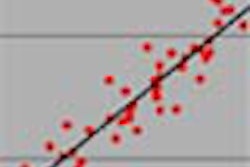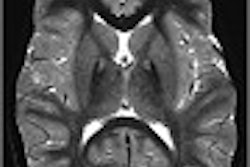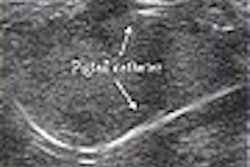Thieme, New York, 1999, $199.
Those seeking an illustrated guide to differential diagnosis in pediatric imaging will be very satisfied with this book. The authors -- all eminent pediatric imaging specialists -- have produced a volume that will find a permanent place in the reference library of those who care for children and interpret their radiographic studies.
The book is clearly organized, beginning with a superb table of contents and index. The text is divided into seven chapters by organ system, and subdivided by anatomy. Charts and tables of normal biometric data introduce each chapter and subsection, along with comments on normal imaging technique.
Tables of differential diagnosis for specific radiographic findings form the heart of the work. These are systematically presented in three-column format.
Differential considerations for a radiographic appearance are listed in order from most to least common entities. Rare and extremely rare diagnoses are also designated. Both normal variants and imaging pitfalls, which could simulate pathology, are included in the differential diagnoses. References to illustrative figures, often located on the same page or following, are included with most of the listed entities.
A section called "Findings" discusses symptoms or radiographic findings characteristic of each diagnosis. A special "Comments" column provides further information on each entity, including recommendations for further imaging when appropriate.
Image quality is very good throughout, and the juxtaposition of images illustrating the different entities in a differential diagnosis is valuable and visually instructive. As the authors note in their preface, pediatric diagnosis is accomplished for the most part with plain radiography and ultrasound. These modalities, therefore, comprise the bulk of illustration.
This approach has its limits. For example, the plain-film differential diagnosis of congenital heart disease. While classes of lesions are suggested by initial plain-film interpretation, precise anatomic delineation is possible with modern cardiovascular MRI, which receives little or no attention here. Likewise, the practitioner seeking in-depth differential diagnosis of pediatric craniospinal CT and MRI will require an additional reference.
However, the authors do excel in their presentation of plain-film radiology. Particularly noteworthy are the superb sections on pulmonary and osseous pathology. Further enriching the work are several well prepared schematic diagrams. Especially noteworthy are those detailing rib anomalies, alterations in cardiac silhouette due to specific cardiac chamber hypertrophy or dilation, and a summary of the anorectal anomalies.
Dr. Raymond ThorntonAuntMinnie.com contributing writer
February 10, 2003
Dr. Thornton is chief resident, department of radiology, at the University of California, San Francisco. He will be a fellow in vascular and interventional radiology at UCSF in July 2003.
If you are interested in reviewing a book, let us know at [email protected].
The opinions expressed in this review are those of the author, and do not necessarily reflect the views of AuntMinnie.com.
Copyright © 2003 AuntMinnie.com



















